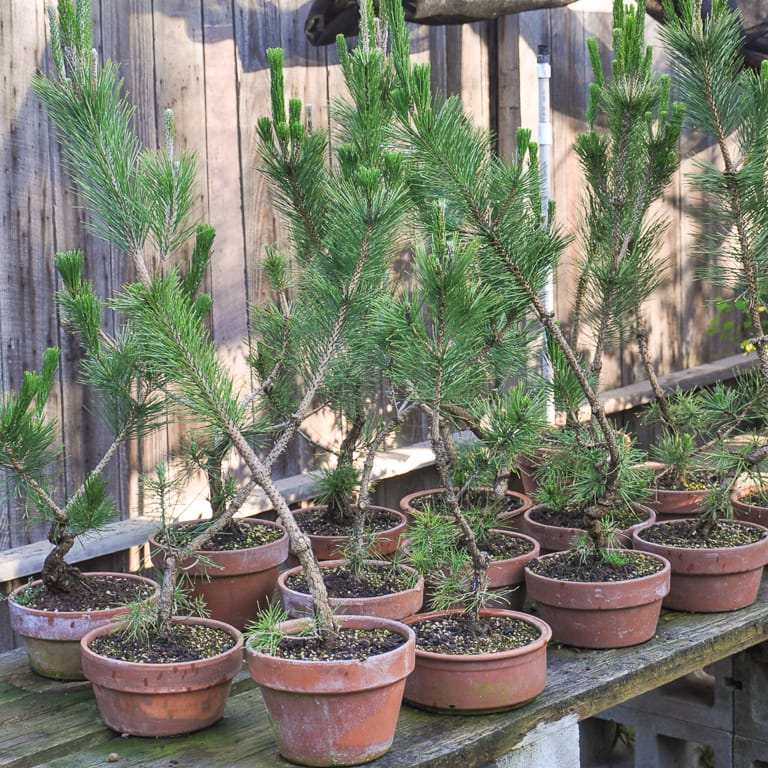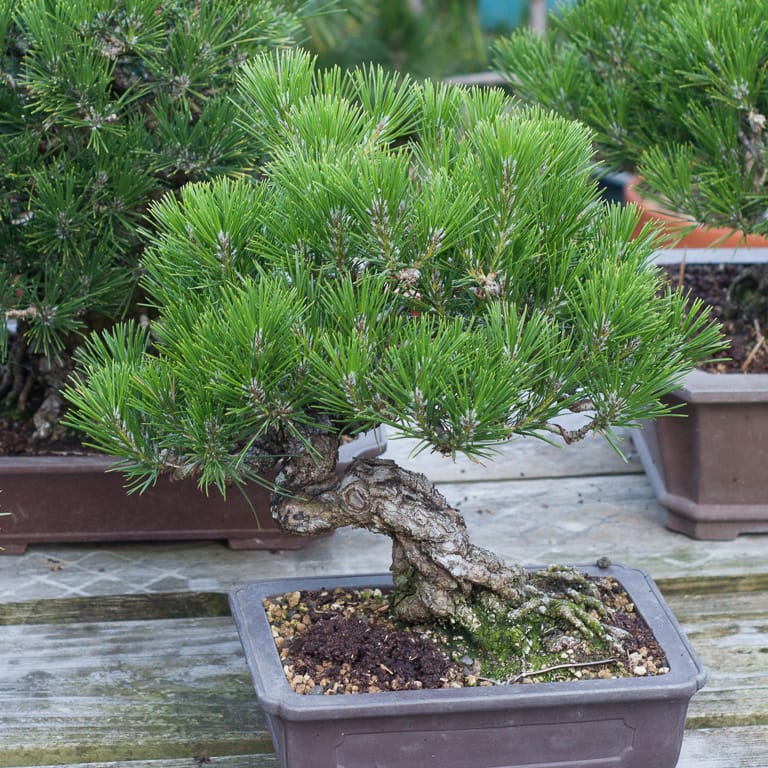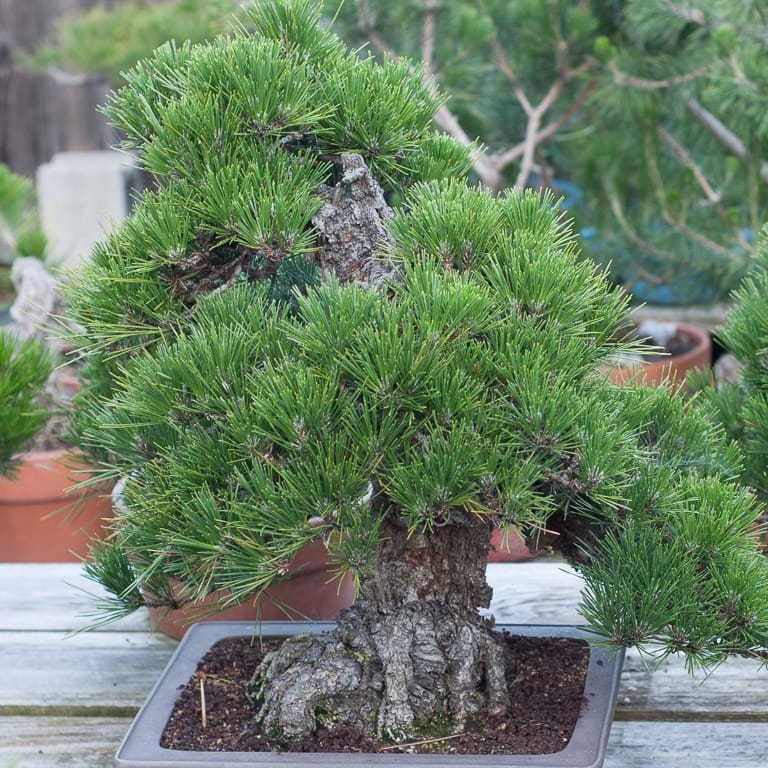There has been a lot of enthusiasm lately for the scientific side of bonsai. I’ve been a part of this, sharing stories, for example, of testing and acidifying water in an attempt to green up my garden.
I started pursuing the topic when I noticed how much harder it had become to keep my pines the deep green color that makes pines so appealing.
Looking for a technical solution, I sent a water sample to a lab and learned that the pH of my water was high. I’d tested it years before and found it to vary wildly throughout the year, but I had yet to see symptoms of water-related problems in the garden.
Now I was seeing increased signs of root pathogens and failing to keep my trees green even when I applied lots of fertilizer.

The good old days – black pines from my garden in 2009
Rewinding back to when I started growing bonsai, I had a small collection of odds and ends plus a small batch of black pines I’d grown from seed.
At the time, I didn’t know about tea bags or fertilizer baskets, and Japanese fertilizers weren’t easy to find. I opted for the least expensive organic product I could find – cottonseed meal – and simply spread it on the surface of the soil. I supplemented this with fish emulsion when I thought of it, but I didn’t follow a schedule and my applications were uneven.

Young pines in 2009
These were also the years when I lived in an apartment and my trees were in a garden ten minutes away by bicycle. I worked at a job that prevented me from watering during the day so I installed an automatic system and didn’t check on the trees as often as I should have. As a result, the pines dried out a lot.
When I look back on these years, I now understand that applying cottonseed to the soil helped acidify the water, and reducing watering frequency is a great way to avoid root pathogens. In other words, I was taking an effective approach to keeping my trees healthy without realizing it.

Green pines in 2012

Cottonseed meal on the surface of the soil

Cottonseed meal covering the soil surface
More recently, two things changed that led to my current problems. The first struck when I started doing bonsai full-time. Working from home allowed me to water more – which I thought was a good thing – and I likely stressed my pines by keeping them too wet.
A year or two later, I stopped using cottonseed meal and other dry fertilizers when I discovered the extent to which vermin had been stealing the tea bags and fertilizer baskets. I switched to using liquid fertilizers exclusively which meant I was only acidifying the water on days when I applied fertilizer. As a result, some days the trees got water in the pH 4 – 5 range, and the rest of the time it was over pH 9.0.

Dark green foliage on young pines in winter, 2015
I’m now working on the most effective way to keep my pines green in light of what I’ve learned over the years. I’m working with different fertilizers and soil amendments, adjusting watering frequency, and testing different locations in my garden.
The reason I wanted to share this story is that I don’t think every problem requires a scientific investigation, and that there are often plenty of solutions to problems that don’t require much time, money, or complexity.
At least that’s my goal. Will report back when I have more to share on the topic.
Introducing a new podcast – the Bonsai Wire!
In recent weeks, I’ve teamed up with Michael Hagedorn, Andrew Robson, and John Eads to start a new podcast. Our aim is to engage bonsai topics that interest us with interviews, Q&A episodes, and round table discussions.
Our first three episodes are available at bonsaiwirepodcast.com. They include an introductory episode, a round table discussion about collection management, and an interview with Colin Lewis.
More episodes are in the works so tune in and subscribe at:
bonsaiwirepodcast.com
Subscribe to Indian Bonsai Art
New Posts Delivered Every Tuesday and Friday

